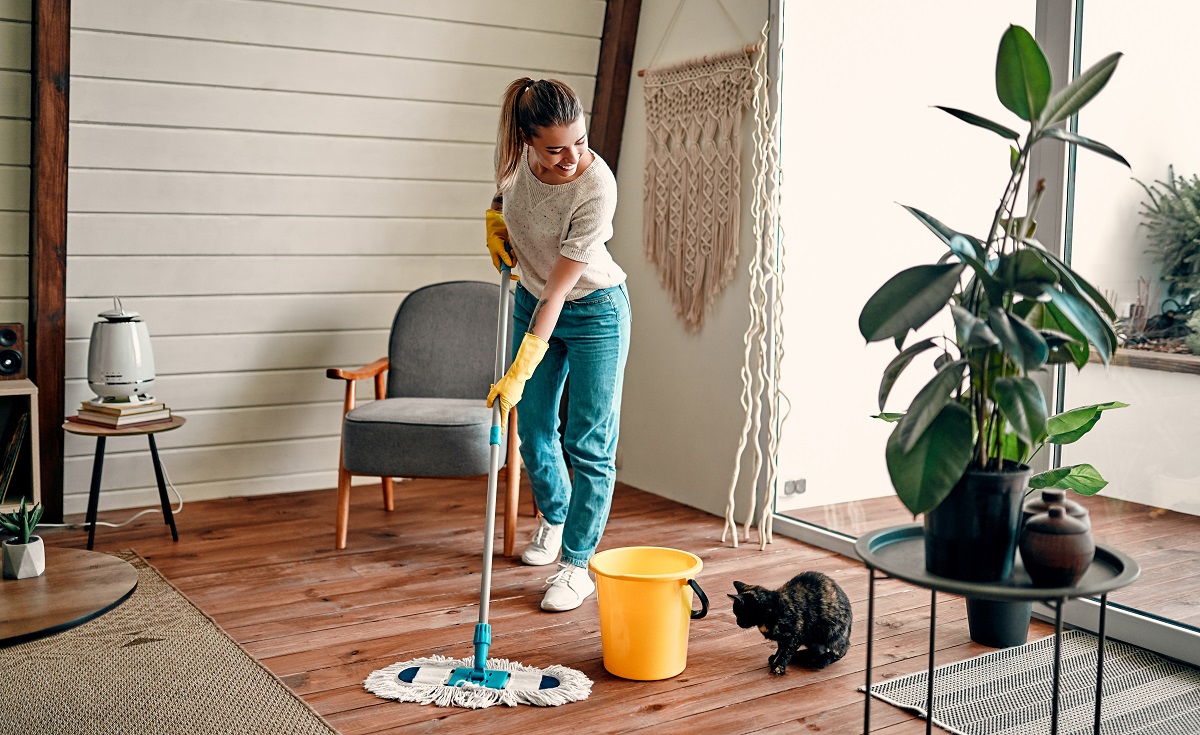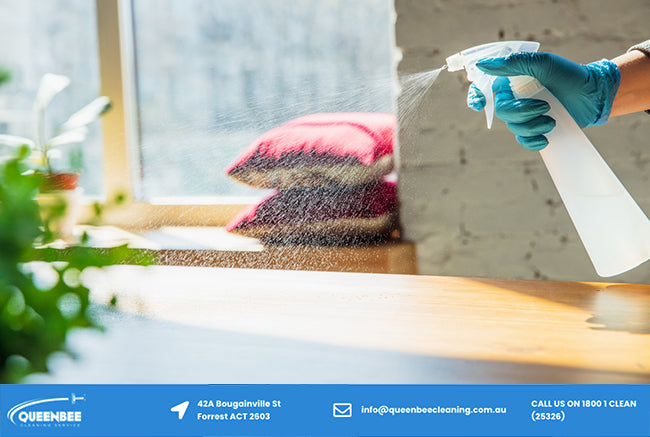Detailed Everyday Cleaning Overview: Specifically How to Scrub the Surfaces, Vacuum Carpets, and Clear Out Any Clutter Effectively
Detailed Everyday Cleaning Overview: Specifically How to Scrub the Surfaces, Vacuum Carpets, and Clear Out Any Clutter Effectively
Blog Article
Comprehending the Demand for Extensively Sanitizing and Sanitizing Often Touched Surfaces in High-Traffic Locations
In the world of public health and safety and security, the careful disinfection and sanitization of regularly touched surface areas in high-traffic areas stand as extremely important steps in protecting against the spread of harmful virus. By exploring the different elements of surface area sanitation, from the dangers linked with neglecting cleansing protocols to the reliable methods that can be used, a more clear understanding arises of the important role these practices play in guarding public health and wellness.
Value of Surface Disinfection
Stressing the detailed sanitation of high-traffic surfaces is critical in preserving a hygienic setting and stopping the spread of damaging pathogens. High-touch surface areas such as door deals with, light buttons, elevator switches, and counter tops work as reproducing grounds for infections and microorganisms. Routine disinfection of these surface areas is crucial to reduce the threat of contamination and transmission of diseases.
By applying a robust sanitation protocol, organizations and organizations can develop a safer setting for workers, site visitors, and customers. Correct surface sanitation not just minimizes the spread of contagious illness yet also imparts self-confidence in the cleanliness and security of the premises. This proactive technique shows a dedication to health and wellness, which is especially vital in high-traffic areas where the possibility of direct exposure to virus is enhanced.
Furthermore, surface disinfection plays a critical role in overall infection control techniques. Integrated with hand health methods, using masks, and keeping physical distancing, detailed sanitation of high-touch surface areas creates a thorough protection versus the transmission of harmful microbes. Prioritizing surface disinfection is a vital element of an alternative method to health and wellness and security in shared spaces.
Risks of Neglecting Cleansing Practices
Disregarding detailed sanitation of high-traffic surface areas substantially increases the risk of viral and microbial contamination, presenting a severe risk to the health and wellness of people often visiting these areas. Failure to execute proper cleansing techniques can bring about the build-up and spread of damaging pathogens, consisting of microorganisms and viruses, on frequently touched surface areas such as doorknobs, handrails, elevator switches, and counter tops.

Moreover, ignoring the importance of thorough cleansing not only endangers the well-being of people however also weakens efforts to keep a clean and sanitary environment. It is critical to acknowledge the significance of appropriate disinfection procedures in stopping the spread of infections and safeguarding public health and wellness.
Effective Sanitation Methods
To keep optimal sanitation and decrease the threat of contamination on high-traffic surfaces, utilizing reliable disinfection techniques is essential. One of one of the most reliable and common disinfection approaches is using chemical anti-bacterials. These items can vary in stamina and make-up, with some targeting specific microorganisms like microorganisms or infections. It is vital to follow the supplier's guidelines for appropriate dilution, call time, and air flow when using chemical disinfectants to guarantee their performance - Everyday cleaning.
Another effective method is using UV-C light. UV-C light has been shown to be effective in killing a wide array of microorganisms by disrupting their DNA framework, hence stopping them from reproducing. Nonetheless, it is necessary to make use of UV-C light effectively, ensuring that the correct intensity and exposure time are related to attain the preferred sanitation outcomes.
In addition, using heavy steam cleansing as a sanitation approach can be extremely effective, particularly on surface areas that are heat-resistant. Steam can pass through porous surface areas and kill bacteria, viruses, and various other pathogens efficiently. When using heavy steam cleansing, it is very important to guarantee that the surface area gets to the required temperature for a sufficient amount of time to guarantee appropriate sanitation.
Influence on Public Health
The upkeep of high requirements of tidiness and sanitation on high-traffic surface areas plays a vital role in securing public health and wellness. Frequently touched surface areas in areas with high step, such as doorknobs, hand rails, lift buttons, and toilet facilities, serve as reproducing premises for damaging virus.
Reliable cleanliness methods not only protect individuals from falling ill yet likewise add to the overall wellness of society. Public health and wellness authorities emphasize the significance of maintaining clean environments to avoid outbreaks and include the spread of health problems. In high-traffic areas like flight terminals, schools, medical facilities, and mass transit systems, the influence of extensive disinfection steps can not be understated. Focusing on the sanitization of frequently touched surface areas is an aggressive technique to promoting public wellness and enhancing the safety and security of people in shared spaces.
Executing Regular Cleaning Protocols
Without delay setting up and sticking to a consistent schedule of cleansing methods is paramount for maintaining the tidiness and safety of high-traffic surface areas. Routine cleaning procedures are crucial in preventing the accumulation of bacteria and pathogens on regularly touched surface areas, specifically in areas with high foot web traffic. By applying a systematic approach to cleansing, organizations can effectively reduce the risk of illness transmission and produce a much healthier setting for employees, consumers, and the public.
To establish an effective cleansing routine, it visit this web-site is vital to determine high-traffic locations that call for regular focus. These areas might include doorknobs, hand rails, lift buttons, washroom facilities, and common equipment. Carrying out a regular cleansing program that targets these surfaces multiple times a day can significantly lower the spread of dangerous bacteria and viruses.
Moreover, utilizing suitable cleaner and anti-bacterials is crucial to ensuring that surface areas are thoroughly sanitized. Regular training of cleaning staff on appropriate cleaning strategies and the significance of adherence to the cleaning routine is also discover this info here crucial in keeping a hygienic environment. By prioritizing consistent cleaning methods, companies can promote the health and wellness and health of people who connect with these high-traffic surface areas.

Conclusion
In final thought, it is essential to focus on extensive sanitation and sanitization of often touched surface areas in high-traffic areas to stop the spread of unsafe pathogens and preserve public health and wellness. It is critical to recognize the significance of keeping tidy surface areas in high-traffic locations to ensure the health of the community.
In the world of public health and safety, the meticulous sanitation and sanitization of often touched surface areas in high-traffic areas stand as critical actions in protecting against the spread of hazardous click for more info virus. By exploring the various elements of surface sanitation, from the dangers linked with ignoring cleansing methods to the effective approaches that can be utilized, a more clear understanding emerges of the crucial function these techniques play in safeguarding public health.Furthermore, employing heavy steam cleansing as a disinfection approach can be very efficient, especially on surface areas that are heat-resistant. When utilizing vapor cleaning, it is essential to ensure that the surface area gets to the called for temperature for an adequate quantity of time to ensure proper sanitation.
In verdict, it is essential to prioritize comprehensive sanitation and sanitization of frequently touched surface areas in high-traffic locations to prevent the spread of unsafe microorganisms and preserve public health and wellness.
Report this page